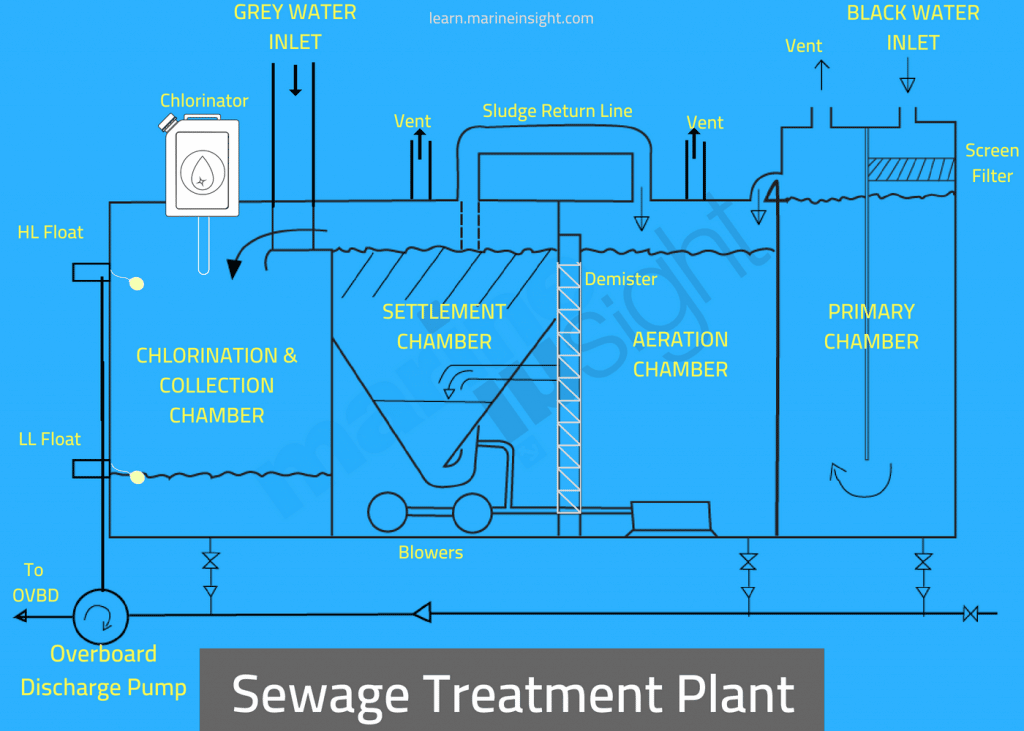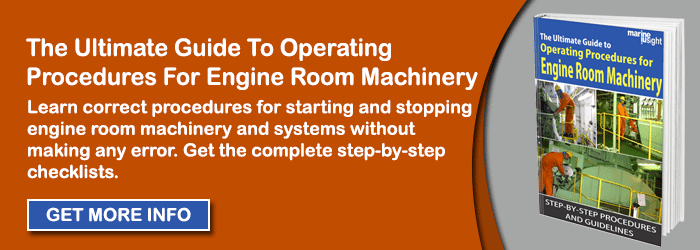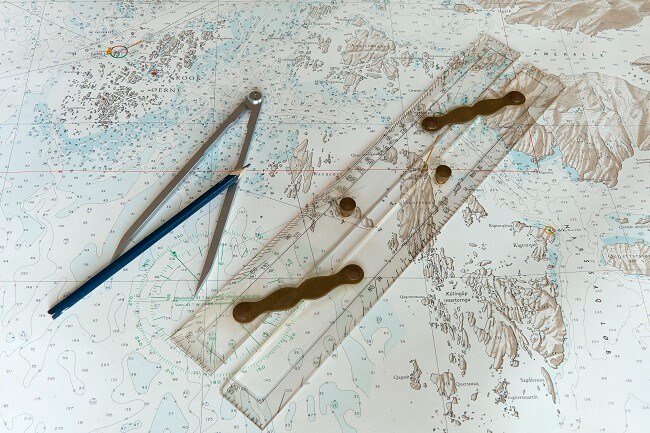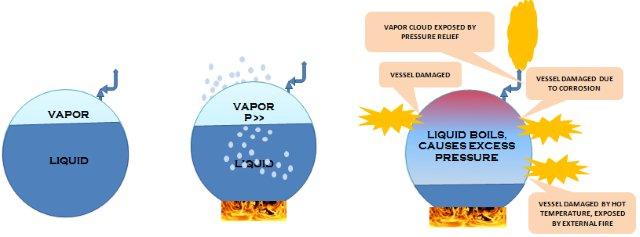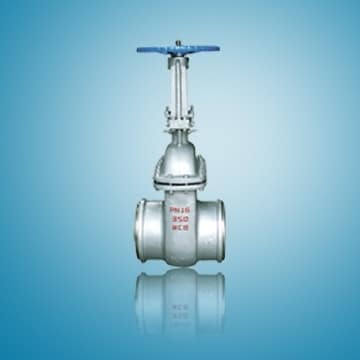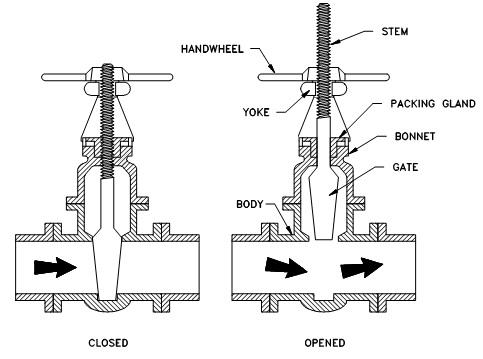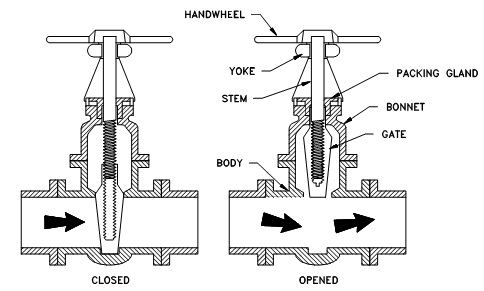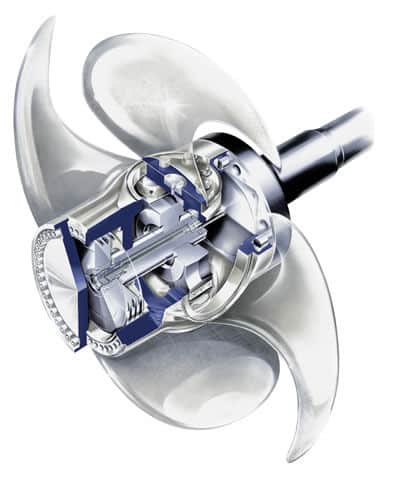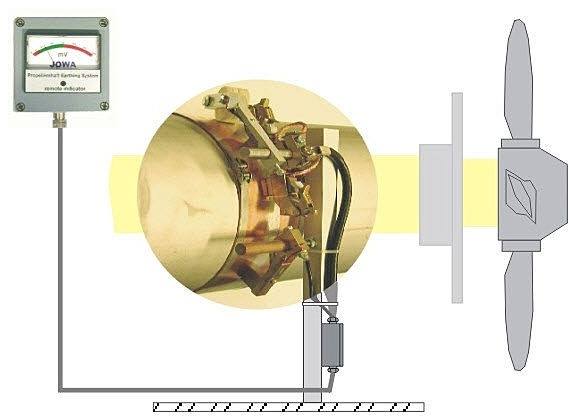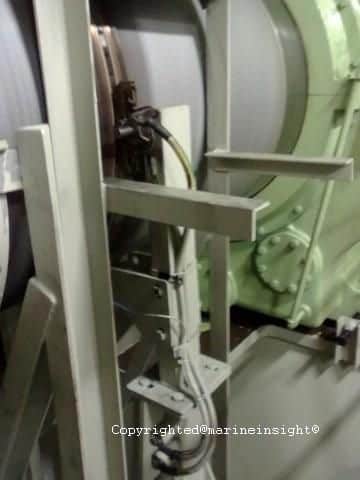
For a seafarer, working on a ship means dealing with several challenges on a daily basis, for which, he/she needs to be prepared at all times. Fire pump on a ship is an essential machinery which helps seafarers to tackle extreme emergency situations involving fire. These marine firefighting pumps are also popularly known as Marine Fifi Pumps.
Usually, centrifugal pumps are used as marine fire pumps as they have high flow capabilities and can swiftly handle water and foam. In the event of a fire on a ship, it is very important that sufficient water is available at apt pressure, and an alternate arrangement is made in case one fire pump fails to operate or its controls are inaccessible. For this purpose, multiple marine firefighting pumps are required on board.
Related Read: Free Sample: Centrifugal Pump Report
Main Fire Pumps:
The main fire pumps installed on ships are located inside the ship’s engine room, usually at the bottom platform. They are electrically driven from the main supply of the ship.
It is very common to find them installed near general service pump and ballast pumps. The general service pump lines are interconnected with the fire main and at times are used to provide water to the fire system. In some settings, they are also called general service and fire pump. These pumps should not be used for pumping oil in any case. A changeover arrangement may be provided to use the main fire pump for general service, only when it is approved by the administration.

The general service and fire pump supply water to the following:
- To the fire hose connections in the engine room, main deck, accommodation, shaft tunnel, steering gear room etc.
- To the anchor washing at forecastle
- As driving water for the ejector fitted in the cargo hold bilges
- As driving water for the ejector fitted in the dangerous cargo hold bilges
- To the swimming pool, if fitted
Related Read: Brief Overview of Fire Control Plan on Ship
Capacity & Requirements for Main Fire Pumps:
The number of fire pumps and their capacity will depend on the type of ship and its gross tonnage.
For Passenger ships –
- Passenger ships of less than 4000 GT should have at least two independent fire pumps
- For passenger ships more than 4000GT, there should be at least three independent fire pumps installed
- The fire pump should be capable of producing the quantity of water not less than 2/3rd of the quantity given by bilge pumps
For Cargo Ships –
- For cargo ships of more than 1000GT, at least two fire pump should be installed with an independent driving arrangement
- For cargo ships which are less than 1000GT, the number of fire pumps to be installed will be decided by the administration
- The installed fire pumps should be capable of discharging a quantity of water not less than 4/3rd of the quantity given by bilge pumps in a passenger ship of the same dimension, provided that total required capacity of the pumps need not exceed 180 m³/hr in a cargo ship
- Each main fire pump for cargo ships shall have a capacity not less than 80% of the total required capacity divided by the minimum number of required fire pumps but not less than 25 m3/hr with at least discharge of water with 2 jets

Other Important Requirements –
If the centrifugal pumps are used as a fire pump, non-return valves are fitted to prevent loss of water back through the open line when the pump is not working.
In case of positive displacement pumps used as a fire pump, a relief valve must be fitted to counter the rise in pressure if the line valve is closed and the pump is operated.
The safe line pressure will depend on the design of the fire line and capacity of the pump and it is governed by the administration.
Related Read: How High-Pressure Water Mist Fire Fighting System For Ships Works?
Emergency fire pump
On ships, every machinery is provided with a backup system i.e. one duplex or spare system or an emergency backup system. For firefighting system, the fire pump is an important machinery and if it fails the complete fire line will become inactive, leading to the spread of fire in no time.
As per SOLAS Chapter I-2, part A regulation 4 all cargo ships of 2000 GT and above, and passenger ships of 1000 GT and above must have an emergency fire pump in a separate space other than the engine room where the main fire pumps are located.
Only in special cases, SOLAS allows the suction of the emergency pump from the same sea chest as that of the main fire pumps. This means the suction pipe must penetrate the engine room. Few classification societies allow this only if the pipings are of A-60 fire prevention standard.
The suction of the emergency fire pump can be either from a remotely operated valve or the suction valve is always kept open. The arrangement will again depend on the requirement of the classification society.
The emergency fire pump can be driven in two ways:
1 Using a diesel engine
2. Using an electrical motor supplied from the emergency generator

In case of fire and main fifi pump becoming non-effective (due to blackout, fire in the engine room, a problem in the main fire pump or its line etc.), the emergency fire pump is used. As the pump is located remote from the engine room space, it can be used as a backup for the main fire pump. Following locations are preferred for emergency fire pump:
- The diesel engine marine fire pump is usually fixed on an upper deck floor of the ship, with big capacity
- Can be fitted in the Steering flat
- Can be fitted in the Shaft tunnel
- Can be fitted in the Forward part of the ship (bow thruster room etc.)
Related Read: Different Types of Fire Extinguishers Used on Ships
Capacity & Requirements
- Emergency fire pump to be provided in Passenger ships of 1000 grt and above
- Emergency fire pump to be provided in cargo ships of 2000 grt and above
- The emergency fire pump must be driven by a self-cooled compression ignition engine or by an electric motor powered from an emergency generator
- It must be located outside the machinery space, in a compartment not forming the part of the engine room
- The emergency fire pump must be provided with its independent suction arrangement and the total suction head should not exceed 4.5 meters under all conditions of list or trim
- The emergency fire pump capacity to be at least 25m3/hr delivering two ½ inches bore jet of water having a horizontal throw not less than 40 ft
- If the pump is located above the water level, a priming arrangement must be provided to fill the pump casing with water before starting
- In a motor-driven emergency fire pump, a heating arrangement must be provided which is also supplied from the emergency switchboard power
- For engine driven pump, the fuel tank capacity should be such that the engine can run the pump at its full load for at least 3 hrs
- A separate reserve fuel tank to be provided outside the engine room machinery space
- The prime mover engine should be of manual/ battery/ hydraulic start type which can be started and operated by one man

Pipeline:
The pipeline used for fire pump line is usually galvanised to avoid corrosion due to seawater. The diameter of the pipe varies between 50mm to 180 mm depending upon the type and size of the ship.
Ensure not to perform any cutting or welding on the fire line as the galvanized coating will get damaged. Any major repair requires replacement of the affected portion with a spare galvanized pipe.
Operating Fire Pump:
Apart from the remote location operation, the fire pump can be operated from the following location remotely:
- From the fire control station
- From the engine control room
- From the bridge
- An arrangement can be provided in the forecastle to operate the fire pump
Related Read: A Brief Overview of Fire Control Plan on Ship
Starting the pump:
- Check the suction valve is fully open
- If a pump is of self-priming type (with a vacuum pump), ensure the supply tank containing the priming water is full
- In centrifugal type fire pump, close the discharge valve and open the air vent on the volute casing
- Close the vent once water comes out
- Start the pump and open the discharge valve gradually
- In the self-priming type centrifugal pump, close the check valve on the attached vacuum pump line
General Checks:
The operation of the main and emergency fire pump must be checked frequently especially during the emergency fire drills. The record of the checks made on the emergency and main fire pump must be done on Saturday or Weekly routine book. Some of the general checks include:
- Oil and grease the bearings
- Check the bearing temperature
- Check the condition of gland packing
- Check for any leakages from mechanical seal if fitted
- When the fire pump will not be used for a longer duration (in dry docks or layups), keep the discharge and suction valve closed
- When sailing in the cold region, keep the pump drained off the water
- Check the standby pump when operating the other fire pump. If it is also reversing, the non-return associated with the standby pump is leaking
- Check for abnormal noise and vibrations
Related Read: What is International Shore Connection?
Other Precautions:
- The emergency fire pump can be installed on the bow thruster room. In case of starting the pump locally, the person needs to go down to the BT room. In case of blackout situation, the ventilation of the BT room will not work. Ensure to keep the door of the room open while entering it to start the emergency pump.
- In freezing weather conditions, Keep the fire and deck wash water line drained
- Never close or throttle the suction valve when the fire pump is running
- When glad packing is used, little water leakage is considered ok. For the mechanical seal, no water leakage should be observed
- When filling the grease, ensure to open the drain plug open which makes the old grease come out
Related Read: 16 Fire Fighting Appliances and Preventive Measures Onboard Ships
Disclaimer: The authors’ views expressed in this article do not necessarily reflect the views of Marine Insight. Data and charts, if used, in the article have been sourced from available information and have not been authenticated by any statutory authority. The author and Marine Insight do not claim it to be accurate nor accept any responsibility for the same. The views constitute only the opinions and do not constitute any guidelines or recommendation on any course of action to be followed by the reader.
The article or images cannot be reproduced, copied, shared or used in any form without the permission of the author and Marine Insight.







